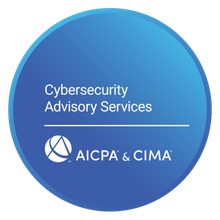Navigating the Cloud: Compliance Essentials for Today's Tax Preparers
Welcome to the evolving landscape of tax preparation, where the shift to the cloud has revolutionized our industry. This digital transformation offers unparalleled convenience, efficiency, and scalability, making it an attractive choice for tax professionals of all scales, from individual CPAs to small and medium-sized firms. However, this shift is more than just a technological upgrade; it's a step into a realm where legal compliance plays a pivotal role.
As we navigate through this new era, it's crucial to understand that the cloud is not just a tool for efficiency but also a space governed by stringent federal regulations. Compliance with these regulations, including the FTC's Safeguards Rule and guidelines set forth by the Gramm-Leach-Bliley Act (GLBA), is not an option but a necessity. Unfortunately, there's a common myth that cloud adoption automatically aligns your practice with these legal requirements - a misconception that can have serious implications.
In this blog post, we'll delve into the heart of what it means to be compliant in the cloud. We'll unravel the layers of federal regulations that govern our practices, debunk the myths surrounding automatic compliance, and provide you with actionable insights to secure your practice. Whether you are a seasoned practitioner or new to the field, this guide is designed to empower you with the knowledge and tools necessary to ensure that your move to the cloud is not only innovative but also in strict adherence to the legal standards that protect your clients and your practice.
Join us as we embark on this journey of understanding and mastering compliance in the cloud, paving the way for a future where your practice thrives securely and confidently in the digital age.
Understanding the Compliance Landscape: Federal Regulations and Cloud Security
In today's fast-paced realm of cloud-based tax preparation, a deep understanding and adherence to federal regulations are not merely best practices but legal imperatives. The Federal Trade Commission's (FTC) amendments to the Safeguards Rule, the enforceable application of provisions set in the Gramm-Leach-Bliley Act (GLBA), have set a foundational framework for compliance in the cloud environment.
The FTC's Final Rule: A Comprehensive Approach to Security
Effective January 10, 2022, the FTC's Final Rule has been a transformative move for financial institutions, including tax preparers. It mandates significant modifications to the existing Safeguards Rule, focusing on enhanced security of customer information and providing detailed guidance for developing a comprehensive information security program.
“The Final Rule contains five main modifications... it adds provisions designed to provide covered financial institutions with more guidance on developing and implementing specific aspects of an overall information security program such as access controls, authentication, and encryption.”
Continuous Monitoring: Essential for Every Practice
A key component of the Final Rule is the emphasis on continuous monitoring or regular penetration testing and vulnerability assessments. This requirement highlights the need for real-time, ongoing monitoring of security systems to detect and respond to threats swiftly.
“Continuous monitoring or periodic penetration testing and vulnerability assessments... are essential for real-time, ongoing monitoring of an information system’s security.”
This proactive approach to cybersecurity is essential for practices of all sizes, ensuring the ongoing integrity and security of their information systems.
Adapting Compliance to Suit Small Practices
Recognizing the diversity in the sizes of financial institutions, the Final Rule brings relief to smaller practices by exempting them from certain requirements if they handle less customer information. This exemption is a balancing act, aiming to reduce the compliance burden while maintaining robust data protection standards.
“It exempts financial institutions that collect less customer information from certain requirements.”
Broadening the 'Financial Institution' Definition
In a significant move, the Final Rule broadens the definition of 'financial institution,' encompassing a wider array of entities. This expansion is a strategic step towards ensuring comprehensive protection of client data across the financial sector.
“It expands the definition of ‘financial institution’ to include entities engaged in activities the Federal Reserve Board determines to be incidental to financial activities."
Implementing Comprehensive Cybersecurity Measures
To fortify their cybersecurity posture, tax practices should implement additional safeguards:
- Encryption: To protect the confidentiality and integrity of sensitive data.
- Access Control: To limit data accessibility to authorized personnel only.
- Regular Audits: To uncover and rectify system vulnerabilities.
- Employee Training: To enhance overall security through awareness.
- Incident Response Plan: To effectively manage security breaches.
Transitioning to a New Era of Compliance
As tax practices integrate these safeguards and adhere to the FTC's guidelines, they transition into a new era of compliance. This transition is not just about meeting legal requirements but about fostering a secure and trustworthy environment for client data.
In the next section, we will explore the myths surrounding cloud compliance and shed light on the realities of securing tax practices in the digital age.
Debunking Common Myths About Cloud Compliance
In the realm of cloud-based tax services, it's essential to separate fact from fiction. Here we address and dispel some common myths about compliance in the cloud environment.
Myth 1: The Cloud is Automatically Compliant
A prevalent myth is that using cloud services automatically ensures full regulatory compliance. However, compliance encompasses a broader scope of actions and responsibilities beyond the inherent features of cloud platforms.
Myth 2: Small Practices Don’t Need Rigorous Cybersecurity
Another common misconception is that smaller tax practices do not need to be as vigilant about cybersecurity as larger firms. In reality, regardless of size, all tax practices must adopt robust security measures to protect client data.
Myth 3: One-Time Compliance is Sufficient
Some believe that compliance is a one-time setup. This myth overlooks the need for ongoing adaptation and vigilance in the face of evolving digital threats and changing regulations.
Myth 4: Cybersecurity is Too Complex for Small Practices
Cybersecurity can appear daunting, especially for smaller practices. However, the guidelines and regulations are designed to be scalable and applicable across different sizes of tax preparation practices.
Building a Culture of Compliance
Dispelling these myths is crucial in fostering a culture of compliance within the tax preparation industry. It's not just about following rules; it's about actively ensuring the safety and security of client data.
In the next section, we will explore specific strategies and best practices to help tax professionals effectively manage cloud compliance and maintain robust security measures.
Strategies for Effective Cloud Compliance in Tax Preparation
As tax professionals increasingly adopt cloud-based solutions, understanding and implementing effective strategies for cloud compliance is essential. This section delves into best practices that can help tax professionals ensure their cloud operations are both secure and compliant with federal regulations.
Developing a Comprehensive Security Framework
A robust security framework is the foundation of cloud compliance. This involves:
- Risk Assessment: Conducting regular evaluations of potential risks to client data.
- Data Encryption: Ensuring all sensitive data is encrypted, both in transit and at rest.
- Access Controls: Implementing strict protocols to control data access.
Emphasizing Continuous Monitoring and Updates
Continuous monitoring of network activities is crucial for real-time threat detection. Coupled with regular updates to security software, it strengthens defenses against evolving cyber threats.
Cultivating Training and Awareness
Regular training sessions for staff on cybersecurity best practices can significantly reduce data breaches due to human error. Fostering a culture of security within the organization is vital.
Partnering with Cloud Service Providers
Working closely with cloud service providers ensures alignment on security responsibilities. Selecting providers who offer compliant and secure cloud solutions is critical.
Preparing an Incident Response Plan
Having a clear and actionable incident response plan is key to managing data breaches effectively. This plan should include steps for notifying affected parties and preventing future incidents.
Conducting Regular Compliance Audits
Regular audits are crucial for ensuring ongoing compliance with regulations. They help identify improvement areas and maintain continual compliance.
Preparing for the Future of Tax Compliance
Implementing these strategies is a proactive step towards mastering cloud compliance in tax preparation. As the landscape of tax laws and technology continues to evolve, staying informed and adaptable is key to maintaining a secure and compliant practice.
In the next section, we'll explore the evolving landscape of tax preparation, focusing on how staying ahead of compliance trends is crucial for the success and security of tax practices. This will include insights into future regulatory shifts and technological advancements, ensuring that tax professionals are well-equipped to navigate the challenges and opportunities ahead.
Embracing Future Trends in Tax Preparation Compliance
As the tax preparation industry rapidly evolves, staying ahead of compliance trends is crucial for professional success and security. This section explores how tax professionals can navigate and adapt to the changing landscape of tax compliance and technology.
Keeping Pace with Regulatory Changes
The ever-changing nature of tax regulations requires constant vigilance from tax professionals. Keeping up-to-date with the latest changes ensures practices remain compliant and efficient. This involves monitoring updates from bodies like the IRS and the FTC and integrating new requirements into daily operations.
Harnessing Technological Innovations
Advancements in technology, particularly in cloud computing, are revolutionizing tax preparation. By embracing these innovations, tax professionals can enhance the efficiency and security of their services, offering better client experiences and streamlined operations.
Prioritizing Cybersecurity in the Digital Age
In an era where digital data management is the norm, prioritizing cybersecurity is paramount for protecting sensitive client information. Regularly updating cybersecurity protocols and being vigilant about potential threats are essential practices for all tax professionals.
Building Resilience and Adaptability
Resilience in the tax industry goes beyond mere compliance; it's about proactively anticipating and adapting to challenges. Regular training, staying informed about industry trends, and scenario planning are key to building a resilient practice.
Preparing for Future Technological Shifts
The future of tax preparation is poised to see increased integration of AI, machine learning, and data analytics. Tax professionals should prepare to incorporate these technological shifts into their practices to stay competitive and efficient.
Charting a Path for Continued Success
By embracing these future trends and remaining adaptable, tax professionals can ensure their practices not only comply with current standards but also lead in a dynamic and technologically advanced industry. The final section of our discussion will summarize key insights and offer actionable steps for tax professionals to secure and future-proof their practices.
Charting a Path Forward: Key Takeaways for Tax Professionals
As we conclude our exploration of cloud compliance and the evolving landscape of tax preparation, let's summarize the key insights and provide actionable steps for tax professionals to secure and future-proof their practices.
Embracing Continuous Learning and Adaptation
Staying informed about the latest regulatory changes and technological advancements is crucial. Tax professionals should commit to continuous learning and adaptation to ensure they are always compliant and leveraging the best tools available for their practice.
Implementing Robust Cybersecurity Measures
Cybersecurity should be a top priority in any tax practice. Regularly updating security protocols and educating staff about potential threats are essential steps to protect sensitive client data and maintain trust.
Leveraging Technology for Efficiency and Security
Adopting the latest technological solutions, particularly in cloud computing and data security, can significantly enhance the efficiency and security of tax preparation services. This includes exploring new software, embracing automation, and considering innovative approaches like AI and machine learning.
Building a Resilient and Forward-Looking Practice
As tax professionals navigate the dynamic landscape of cloud compliance and tax preparation, it's crucial to adopt a forward-thinking approach. By staying informed about regulatory changes, investing in robust cybersecurity measures, leveraging technology for enhanced efficiency and security, and proactively planning for future trends, tax practitioners can ensure their practices are not only resilient but also at the forefront of industry advancements.
Action Steps for Tax Professionals
- Stay Updated: Regularly check for updates from regulatory bodies and industry news.
- Invest in Training: Allocate resources for staff training and development in cybersecurity and technological advancements.
- Review and Update Security Measures: Conduct periodic audits of your security measures and update them as necessary.
- Explore Technological Innovations: Be open to integrating new technologies into your practice to enhance efficiency and security.
- Plan for the Future: Engage in strategic planning to anticipate future trends and prepare accordingly.
Navigating a Dynamic Future
The journey of compliance and security in tax preparation is ongoing, with new challenges and opportunities constantly emerging. By embracing continuous learning, implementing robust cybersecurity measures, leveraging technology, and proactive planning, tax professionals can navigate these challenges effectively.
To further empower this journey, it is imperative to understand where your practice stands in terms of compliance with current regulations, particularly the FTC Safeguards Rule. This understanding is crucial for ensuring that your practice not only meets the required standards but also employs best practices for data security and client privacy. To aid in this assessment, tax professionals are encouraged to utilize resources like the FTC Safeguards Rule Checklist. This checklist provides a comprehensive overview of necessary safeguards and helps identify areas that may need attention or improvement.
To evaluate your practice's compliance and enhance your cybersecurity posture, access the FTC Safeguards Rule Checklist. This resource will guide you in aligning your practice with the latest regulatory requirements and ensuring the utmost security for your clients' sensitive information. Stay proactive, stay informed, and lead your practice into a secure and dynamic future.






